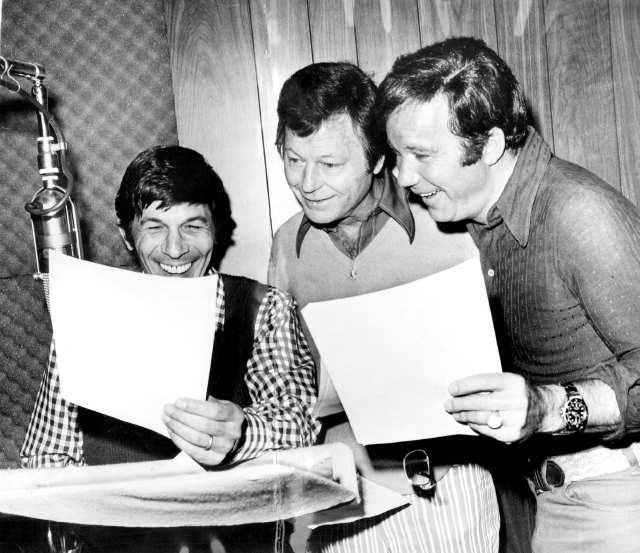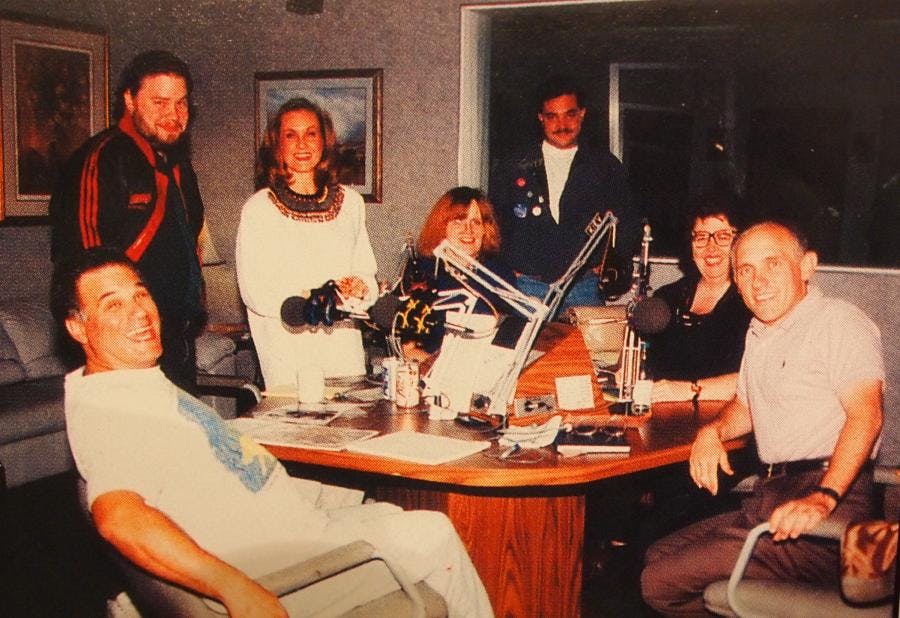Published Oct 5, 2012
Jefferies Tubes #3: Radio Trek
Jefferies Tubes #3: Radio Trek

“After a whole century, what will a Romulan ship look like, Mr. Stiles? I doubt if they'll radio and identify themselves.”
James Kirk, “Balance of Terror”As we continue to crawl around the corners of Star Trek history, this month’s Jefferies Tubes explores the connection between radio advertising and Trek. Radio has been featured as a plot device in many episodes and films, including “Space Seed,” where the radio signals of the SS Botany Bay caught the attention of the crew of the U.S.S. Enterprise and “Vis a Vis,” where Tom Paris played surf music on his holodeck radio. In the real world, however, there have been many times where Star Trek appeared on radio, both as advertising and as a forum for fan communication.Before the Internet, DVDs, MP3s and cable television were mainstays, radio was an important aspect of entertainment for all age groups. One of the earliest uses of Star Trek on the radio was in 1973 when the National Association of Progressive Radio Announcers, Inc. produced a one-minute PSA featuring William Shatner as Captain Kirk, Leonard Nimoy as Spock, and Nichelle Nichols as Uhura. In the PSA, Spock visits a “destroyed, barbarian planet” where the surviving people are in a state similar to “hard drug abuse.” which afflicted 20th Century Earth. Spock discusses with Kirk how, “As a Vulcan, I find the need for hard drugs to be totally illogical.” Produced at the same time that Star Trek had returned to television in the animated version, the PSA recognized that Star Trek’s hopeful message could help bring attention to social problems.


From 1990 to 1998, the syndicated Talk Trek and Beyond was a weekly convention on the air, hosted by creators Joyce Mason and Evelyn de Biase. A labor of love, the program was featured on the Cable Radio Network, which had an audience of more than two million listeners. The program allowed fans to call in and chat about anything having to do with Star Trek, and eventually the show featured many Star Trek actors and creative artists. Dave Rossi, a fan who would eventually become an associate producer on Star Trek: Enterprise and a producer of the Star Trek Remastered project, was a frequent in-studio contributor to the program. Talk Trek and Beyond was important because it gave fans a chance to directly interact with those who created the show, and before Internet discussion boards, it was a chance for those who made Star Trek to learn what fans were thinking. Indeed, in many ways, Talk Trek was the precursor and inspiration for many of today’s excellent fan-produced podcasts.
From 1987’s premiere of Star Trek: The Next Generation to the last episode of Star Trek: Enterprise in 2005, radio commercials would help promote the weekly adventures of the crews of the Enterprise D, DS9, Voyager and the NX-01. These commercials featured narration and scenes from an upcoming episode, provided a general idea of the plot, and alerted fans when those new episodes would premiere in their respective market. The relationship between radio and Star Trek is actually quite natural. The format of Star Trek itself is like an old-time radio program: with narration by the Captain’s Log and descriptive dialogue. For fun, one day try listening and not watching your favorite Star Trek episode, especially from The Original Series. Despite the lack of images, the episode will probably still be enjoyable because of the amount and quality of dialogue, the amazing sound effects and the talented actors, many of whom, like James Doohan and William Shatner, had extensive careers in radio at the start of their careers._________________________Maria Jose and John Tenuto are both sociology professors at the College of Lake County in Grayslake, Illinois, specializing in popular culture and subculture studies. The Tenutos have conducted extensive research on the history of Star Trek, and have presented at venues such as Creation Conventions and the St. Louis Science Center. They have written for the official Star Trek Magazine and their extensive collection of Star Trek items has been featured in SFX Magazine. Their theory about the “20-Year Nostalgia Cycle” and research on Star Trek fans has been featured on WGN News, BBC Radio, and in the documentary The Force Among Us. They are currently researching all known paperwork from the making of the classic episode "Space Seed" and are excited to share some previously unreported information about Khan's first adventure with fellow fans next year when the research is complete. Contact the Tenutos at jtenuto@clcillinois.edu or mjtenuto@clcillinois.edu.

